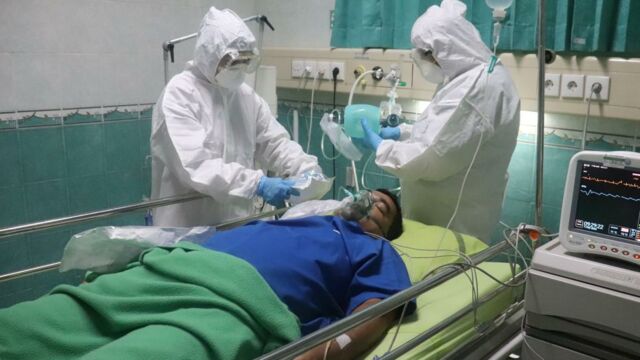There are a few lesser-known symptoms of the Omicron variant that could indicate that you need immediate medical attention. Some of these symptoms can appear on your skin, lips, or nails, and it is vital to have them checked by your doctor if you detect them.
Discover our latest podcast
According to American health authorities at the Centre for Disease Control (CDC), a pale, grey, or blue-coloured tinge on your face, lips, or nail bed is one sign of Omicron. Although Omicron is likely to spread considerably quicker than other variants, studies have found it to be milder than different strains, with the first official UK report indicating a 50 to 70% reduced risk of hospitalisation than Delta.
O2 level drop
Due to the high transmissibility of the variant, these minor warning signs can help take quicker action. A bluish colour in your skin, lips, or nails could be a symptom of low oxygen levels. Depending on different people and their health, the colour change could also be to being pale or grey. Either way, it means that something is wrong with your oxygen level and that puts you at risk.
According to US health experts, any occurrence of the ailment is an emergency warning sign that should be checked up by a medical professional right away. Lower back pain, a hoarse or scratchy voice, nocturnal sweats, aching muscles, and a runny nose are all symptoms of Omicron. Preliminary evidence on Omicron suggests that booster shots defend against it and give people the best chance of surviving the pandemic. As such, it is necessary to get booster shots as soon as possible.
Know the virus
Another approach to preventing the virus from spreading is to be aware of the symptoms of all the variants. For instance, a high temperature, a new chronic cough, and a loss or change in sense of taste and smell are the three main symptoms of variants other than Omicron.
Anyone who is sick and has the aforementioned symptoms should have a test done. While there are occasional shortages of PCR tests, lateral flow tests are an excellent way to keep your loved ones safe because they deliver quick findings. It is advised to take lateral flow tests on days where you plan to meet someone, to prevent the spread of the variant. Further, all lateral flow test results must be reported to the NHS. In case, the test result is positive, you should self-isolate yourself and get a PCR test done.















